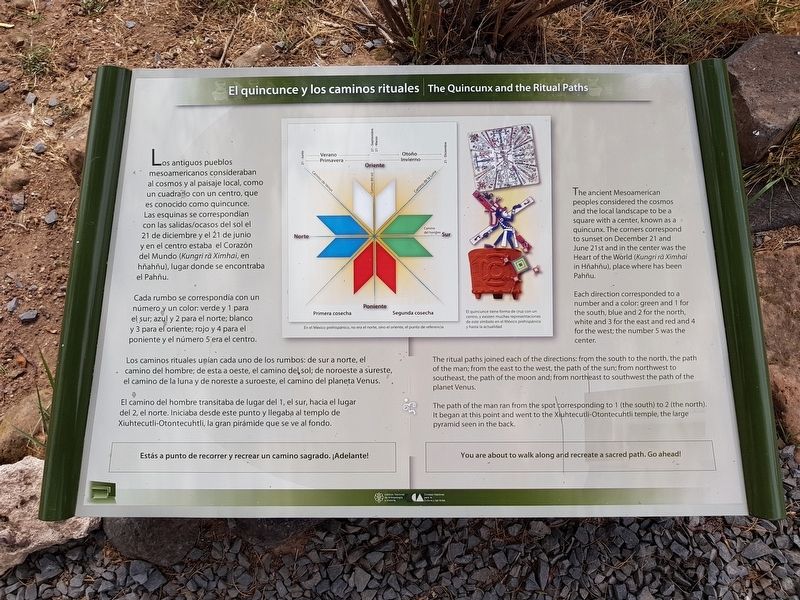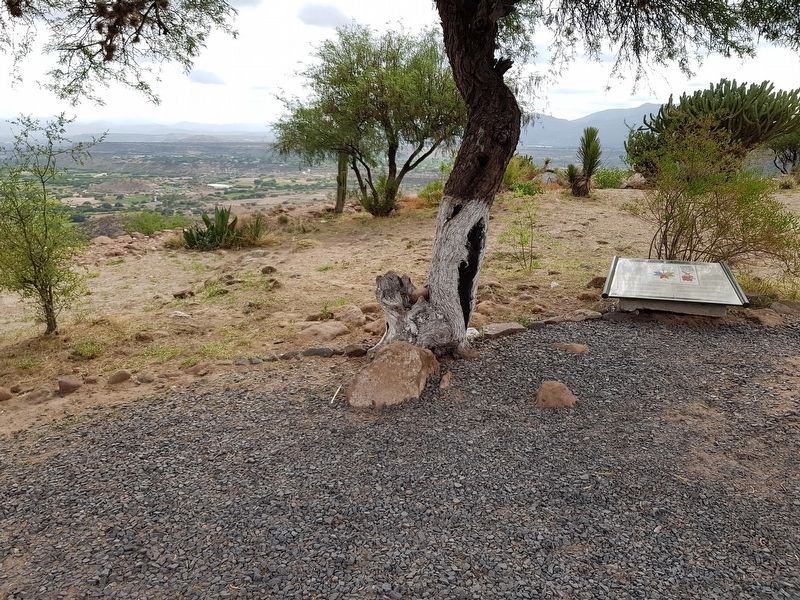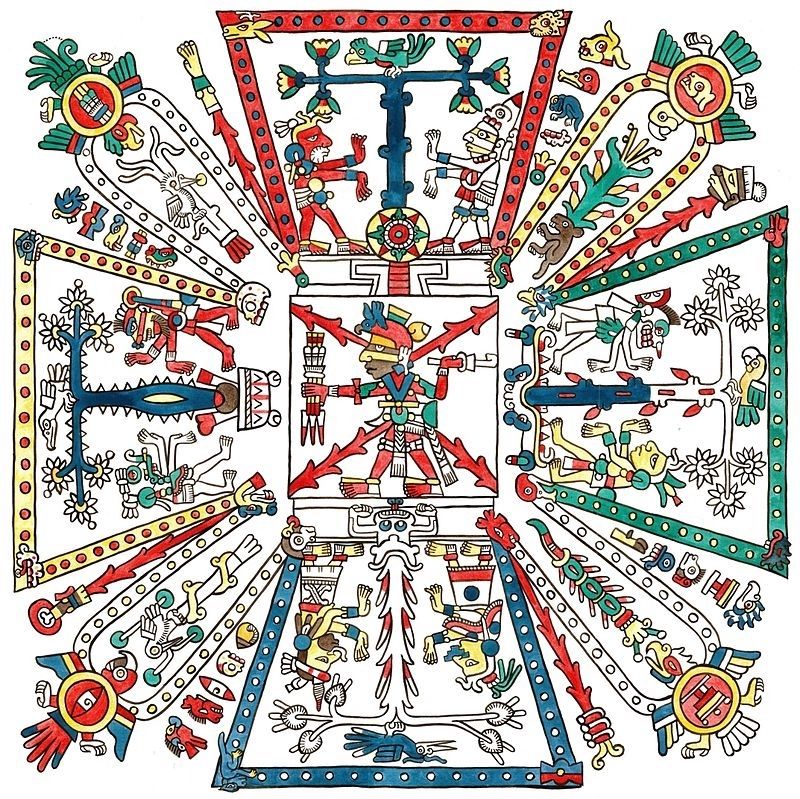La Mesilla in Tecozautla, Hidalgo, Mexico — The Central Highlands (North America)
The Quincunx and the Ritual Paths
El quincunce y los caminos rituales
Los antiguos pueblos mesoamericanos consideraban al cosmos y al paisaje local, como un cuadralo con un centro, que es conocido como quincunce. Las esquinas se correspondían con las salidas/ocasos del sol el 21 de diciembre y el 21 de junio y en el centro estaba el Corazón del Mundo (Kungri rä Ximhai, en hñahñu), lugar donde se encontraba el Pahñu.
Cada rumbo se correspondía con un número y un color: verde y 1 para el sur; azul y 2 para el norte; blanco y 3 para el oriente; rojo y 4 para el poniente y el número 5 era el centro.
Los caminos rituales unían cada uno de los rumbos: de sur a norte, el camino del hombre; de esta a oeste, el camino del sol; de noroeste a sureste, el camino de la luna y de noreste a suroeste, el camino del planeta Venus.
El camino del hombre transitaba de lugar del 1, el sur, hacia el lugar del 2, el norte. Iniciaba desde este punto y llegaba al templo de Xiuhtecutli-Otontecuhtli, la gran pirámide que se ve al fondo.
Estás a punto de recorrer y recrear un camino sagrado. ¡Adelante!
Pie de dibujos:
En el México prehispánico, no era el norte, sino el oriente, el punto de referencia.
El quincunce tiene forma de cruz con un centro, y existen muchas representaciones de este símbolo en el México prehispánico y hasta la actualidad
The Quincunx and the Ritual Paths
The ancient Mesoamerican peoples considered the cosmos and the local landscape to be a square with a center, known as a quincunx. The corners correspond to sunset on December 21 and June 21st and in the center was the Heart of the World (Kungri rä Ximhai in Hñahñu), place where has been Pahñu.
Each direction corresponded to a number and a color: green and 1 for the south, blue and 2 for the north, white and 3 for the east and red and 4 for the west; the number 5 was the center.
The ritual paths joined each of the directions: from the south to the north, the path of the man; from the east to the west, the path of the sun; from northwest to southeast, the path of the moon and; from northeast to southwest the path of the planet Venus.
The path of the man ran from the spot corresponding to 1 (the south) to 2 (the north). It began at this point and went to the Xiuhtecutli-Otontecuhtli temple, the large pyramid seen in the back.
You are about to walk along and recreate a sacred path. Go ahead!
Captions (English translation):
In
prehispanic Mexico, it was not the north, but rather the east, the main reference point.
The quincunx has the form of a cross with a center. Many representations of this symbol can be found in prehispanic Mexico and even in the current day.
Erected by Consejo Nacional para la Cultura y las Artes (CONACULTA) y el Instituto Nacional de Anthropología e Historia (INAH).
Topics. This historical marker is listed in these topic lists: Anthropology & Archaeology • Native Americans. A significant historical year for this entry is 1500.
Location. 20° 30.236′ N, 99° 41.042′ W. Marker is in La Mesilla, Hidalgo, in Tecozautla. Marker can be reached from Entrada del Sitio Arqueológico de Pahñu, on the left when traveling north. Touch for map. Marker is in this post office area: La Mesilla HGO 42460, Mexico. Touch for directions.
Other nearby markers. At least 8 other markers are within walking distance of this marker. Sacred plants and animals (within shouting distance of this marker); Pahñu: The Luminous Path (within shouting distance of this marker); Message in the Soil: Geoglyph (about 120 meters away, measured in a direct line); Messages in the Rocks: Petroglyphs (about 120 meters away); A Sacred Triangle and the Temple of the Sun (about 120 meters away); Circular Altar or Wheel of Sacrifice (Temalácatl) (about 150
meters away); The Calendar on the Landscape (about 150 meters away); The Plaza and the Xiuhtecuhtli Temple (about 180 meters away). Touch for a list and map of all markers in La Mesilla.
Credits. This page was last revised on June 23, 2018. It was originally submitted on June 23, 2018, by J. Makali Bruton of Accra, Ghana. This page has been viewed 307 times since then and 40 times this year. Photos: 1, 2, 3, 4. submitted on June 23, 2018, by J. Makali Bruton of Accra, Ghana.



